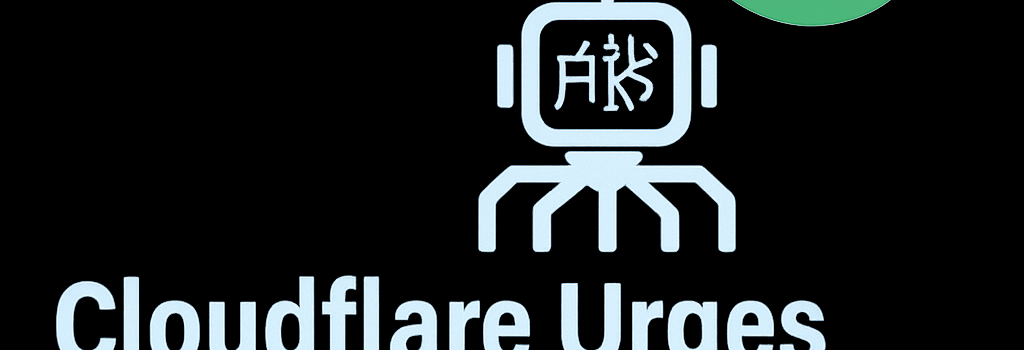Cloudflare Urges Google to Segment AI and Search Crawlers

Background and Context
In early 2025, Cloudflare introduced experimental tools enabling site operators to block AI-focused crawlers or impose a pay-per-crawl fee. The features aim to protect publishers’ content from being harvested for large-language-model summaries—referred to as “AI Overviews” or “Answer Boxes”—while preserving access for traditional search indexing.
Almost immediately, questions arose among webmasters and SEO specialists about how Cloudflare would differentiate Google’s AI and classic search bots. Last week, travel blogger Emma Lawson publicly challenged Cloudflare: would the new rules block both AI and search without distinction?
Cloudflare’s Proposal and Technical Mechanics
Cloudflare CEO Matthew Prince took to X (formerly Twitter) to reassure users that segmented blocking is feasible. He outlined a two-pronged approach:
- Bot Subdomains: Assign distinct DNS entries—
google-ai.crawler.google.comandgoogle-search.crawler.google.com—to isolate AI training traffic from search-indexing traffic. - Extended robots.txt Syntax: Introduce new directives like
User-agent: GoogleAIOverviewandUser-agent: GoogleSearchto allow fine-grained rules per crawler.
These changes would require Google to maintain two crawler binaries or, at minimum, two distinct user-agent strings. Cloudflare has begun prototype testing by intercepting known Googlebot IP ranges (e.g., 66.249.64.0/19) at the edge and applying conditional rules.
Technical Deep Dive: Crawler Segmentation
- IP Verification: Utilize
rDNSplusTLS client certificatesfor crawler authentication. - Robots Meta Tags: Enforce separate
tags alongside classicrobotsheaders. - API-Based Control: Offer a Cloudflare API endpoint for real-time adjustments, returning HTTP 403 for disallowed AI Overview requests and 200 for search crawls.
Google’s Likely Response and Technical Constraints
In response to inquiries, Google remained noncommittal. Splitting crawlers involves significant engineering overhead:
- Maintaining dual infrastructure for each crawler increases operational costs by an estimated 20%.
- Aligning crawler scheduling to avoid indexing gaps risks search-result freshness.
- OAuth tokens or client certificates to authenticate AI bots may conflict with GDPR and local data-protection requirements.
Internal documents shared with The Wall Street Journal suggest Google prefers a unified crawler to minimize complexity. However, a segregated approach could enhance transparency in compliance with emerging AI accountability regulations.
Regulatory Landscape and Legal Implications
Prince hinted at legislative options if talks stall. Potential frameworks include:
- Digital Services Act (EU): Could mandate clear labeling of bots used for AI training.
- US Data Act (proposed): May require opt-outs for commercial AI scrapers similar to email spam regulations.
- DMCA Safe Harbor Extensions: Could force platforms to disclose crawler endpoints to maintain safe-harbor protections.
Legal experts such as Diane Griffith (cyberlaw professor, Stanford) warn that passing tech-specific legislation is a slow process—often outdated by the time it takes effect. Still, the EU’s AI Act, expected to be finalized in 2026, may compel major platforms to expose bot metadata and user-agent patterns.
Industry Perspectives and Expert Opinions
“Splitting crawlers would be a paradigm shift—similar to email authentication protocols like SPF/DKIM,” said John Mueller, Google’s Search Relations Lead, in a recent conference call. “But we need to balance data access with ecosystem health.”
SEO consultant Marie Haynes notes that publishers often rely on AI Overviews for referral traffic. “If you block AI crawls, you might save server load but lose brand exposure in generative search interfaces,” she explained.
Meanwhile, The Internet Archive argues any new barriers risk sidelining noncommercial crawlers essential for digital preservation and academic research.
Potential Impact and Future Outlook
If Cloudflare’s efforts succeed, we could see a new web ecosystem where site owners control AI-training access via standardized protocols—much like existing anti-DDoS and rate-limiting measures. Conversely, deadlock may drive publishers to adopt multiple CDN and crawler-control solutions, fracturing how data is harvested online.
Cloudflare has pledged to “keep the community informed” as talks progress. Analysts expect pilot programs to launch in Q4 2025, followed by broader rollouts in early 2026—potentially coinciding with EU AI Act enforcement.